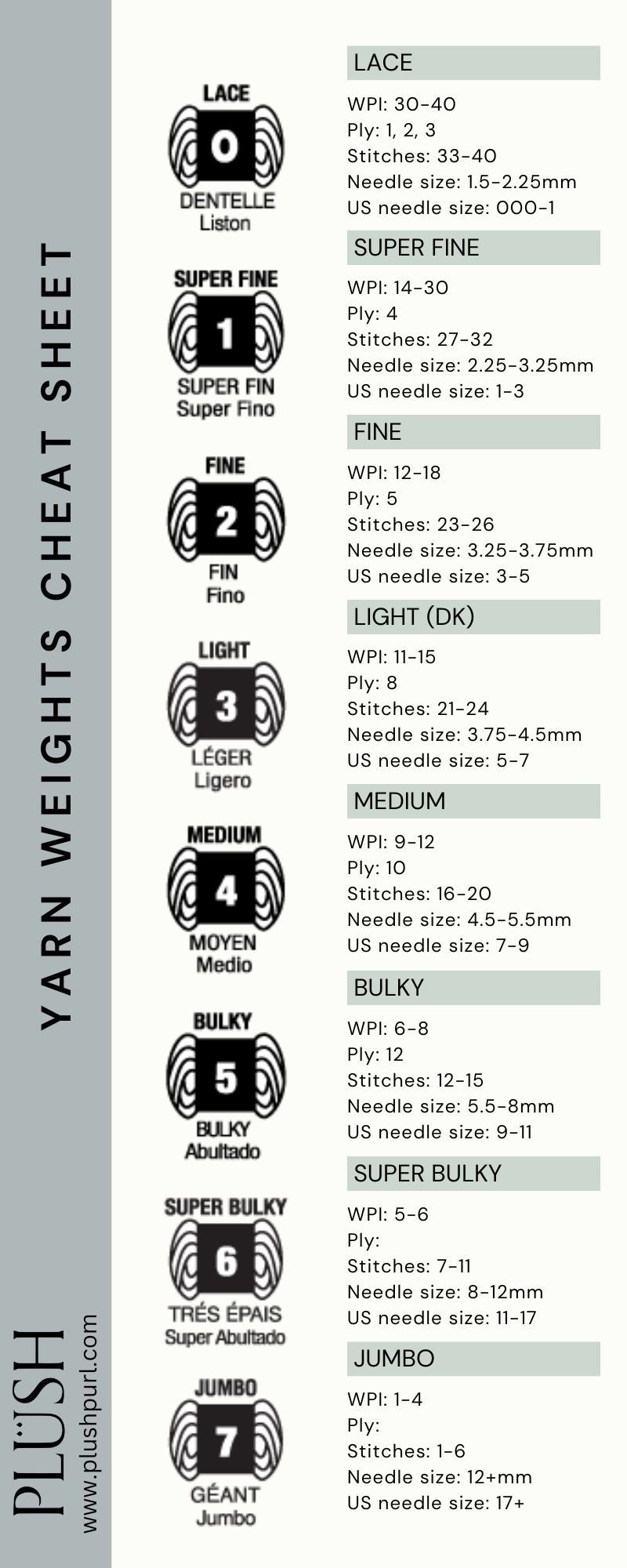Part III: Yarn-picking 101 - How To Choose The Right Yarn for a Project
PART III
You identified the purpose and requirements of your finished project in Part I and narrowed down your type of yarn selection based on the origin of fibre in Part II.
Now we will have a closer look at the technical specifications of yarns. What you want to figure out is the weight, texture and drape of the yarn suggested to be able to find the closest possible yarn twin.
Yarn Weight
The yarn weight is your indicator of the yarn thickness and will inform you if you can knit the same lengths and widths with the same row and stitch count as stated in the pattern. Most patterns are indicating the required weight for the project in their description.
Usually the weight of a skein is displayed as a number on the label and called WPI (Wraps Per Inch). The WPI is a standard classification of yarns introduced by the US based Craft Yarn Council and should match the WPI that is stated in your pattern.
A note to keep in mind is that only because the WPI defines a range of yarn thickness, it might be possible, that two yarns of the same WPI, but each positioned on the opposite end will still have different characteristics.
In case you are missing the WPI information of your yarn, here are some options what you can do.
1. Wraps per inch counting
Pick your yarn and wrap it around a pencil
Continue wrapping until you reach the one inch mark on your pencil.
Once you reached the one inch, count the number of wraps.
2. Yardage/metre and grams
European brands tend to not have the WIP included on their labels. In this case or for any other reason that does not provide you without a WIP information you will focus on the yardage/metre and gram information displayed on the label. Stick to the same yardage/metre with the same gram information from a similar fibre content and you are good to go!
Ply & what does it mean
A ply is a single strand of threat, and ply as a metric defines how many individual strands are twisted together to make the yarn. This term finds it’s history in the days when yarn production was manual labor. Through the spinning process single yarn threats were plied with one or more threads to make the yarn a desired weight.
When you want to find out the ply of your yarn, you gently untwist the yarn which forces the plies to come apart and revealing how many have been twisted together.
The basic rule of thumb is that the more ply a yarn has, the more texture it will add to the finished project and define its shape and appearance. The less ply, the softer and slightly fuzzy the finished project will look like, with a charmingly light and airy feel.
Worsted vs woolen spun
One final note on ply: depending on the way how the yarn is spun, this will have a impact on the texture of your finished project. The most commercial is worsted spun, and usually the yarn label will state worsted yarn as a characteristic of the skein. Worsted spun will ensure an excellent stitch definition, more drape and tends to be more resilient. It is a great characteristic to watch out for when you plan to have a lot of detail work like cable knits going on in your pattern.
Another method is woolen spun. This technique produces a lofty thread which is perfect for warm garments and blooms perfectly after washing. This type is used best in colour work projects.
Ok that was a lot of theory in one piece. All of the above information are summed up in below overview.
A true game changer tool I highly recommend to check out is YarnSub. YarnSub is a great website with broad database about branded yarns and their interchangeability based on their characteristics. You can also use Ravelry and check out their massive library of yarns.
With all that knowledge in mind you are now equipped to conquer the final step of yarn substitution, which is making a swatch. Making a swatch and checking your actual gauge of the swatch will take all the discussed theory and decisions you made and combines it with your personal tension. But this topic deserves it's own post in the near future.
That’s all for this post. Besides all theory, knitting is supposed to be fun. Keep smiling and knit on!





